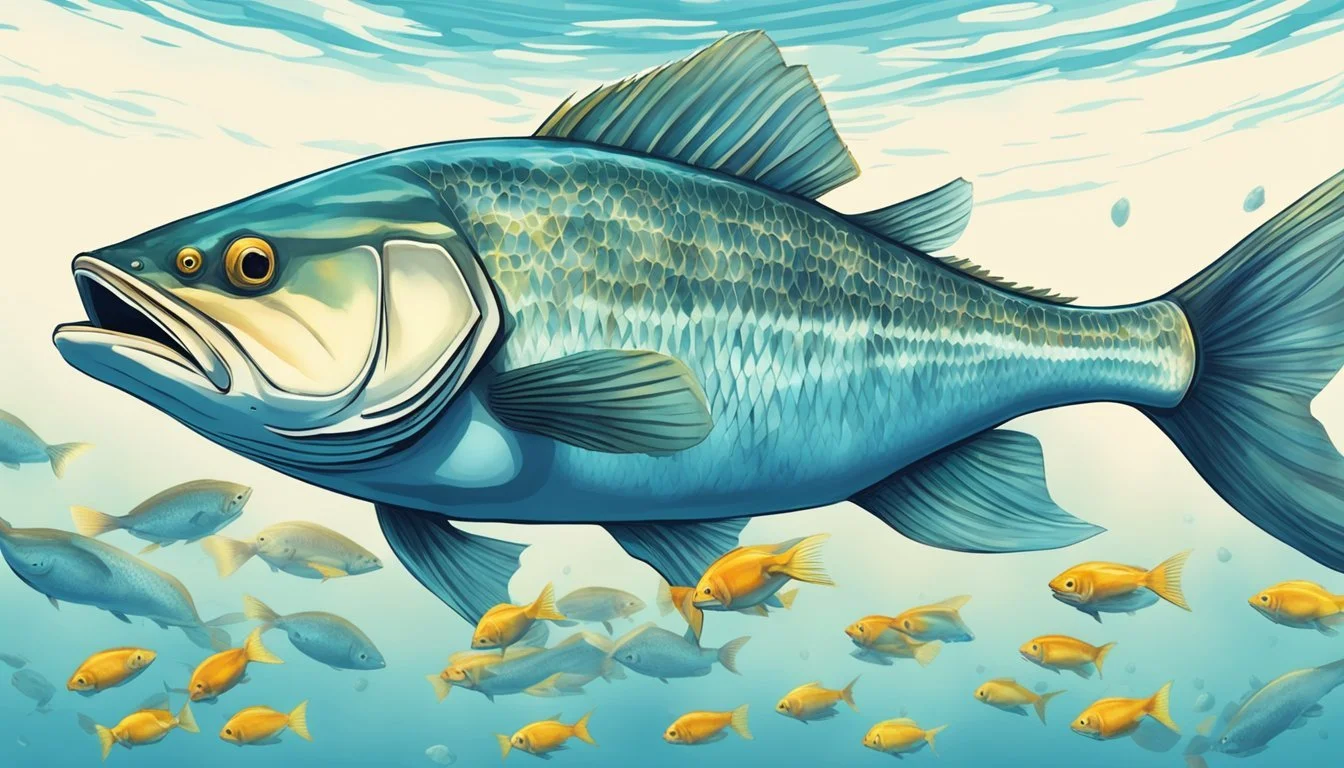How to Identify the Best Fish for a Carnivore Diet
Top Picks for Optimal Nutrition
Embarking on a carnivore diet places a strong emphasis on animal products, and including the right type of fish (What wine goes well with fish?) can be a crucial part of this dietary approach. Fish is prized for its nutrient density, particularly for its high omega-3 fatty acid content, which is beneficial for cardiovascular health and inflammation reduction. When identifying the best fish for a carnivore diet, the goal is to select varieties that complement the nutritional profile of other animal foods consumed.
The optimal fish for those following a carnivore diet are typically the fatty species. These include salmon, (What wine goes well with salmon?) mackerel, and sardines, which are not only rich in omega-3s but also provide a significant amount of high-quality protein. The choice between fresh and frozen fish does not significantly alter their nutrient composition, ensuring that individuals can benefit from these aquatic sources' nutritional value regardless of their form or availability.
Moreover, when incorporating fish into a carnivore diet, it is crucial to consider sustainability and the potential presence of contaminants such as mercury. Smaller fish, like sardines, generally have lower levels of mercury compared to larger predatory species. These factors, combined with the nutritional considerations, guide the inclusion of fish in a balanced carnivore diet.
Understanding the Carnivore Diet
The carnivore diet centers on the consumption of animal products exclusively, eliminating plant-based foods. It epitomizes a nutrient-dense approach to nutrition, prioritizing meats, which are rich in protein and fats that the human body requires for various functions. Those adhering to this diet place a substantial emphasis on quality, often opting for grass-fed beef and free-range poultry.
Nutrients: The diet is abundant in essential vitamins and minerals found naturally in animal products.
Nutrition: It seeks to simplify dieting by focusing on natural sources of nutrients essential for overall health.
Healthy: Considered by its proponents as a means to return to a more 'ancestral' way of eating, it is viewed as a way to eat "healthy" by some, but this is subject to individual health needs and responses to the diet.
This eating pattern includes a variety of animal products such as:
Proponents of the carnivore diet argue that the human digestive tract is well-suited to meat consumption and that an animal-based diet provides all the necessary nutrition without the need for plant-based foods. They also claim that even vitamin C, commonly associated with fruits, can be obtained in sufficient quantities from animal sources, although this is a point of contention among nutritionists. An animal-based diet has been noted for its high concentration of amino acids and fatty acids.
The emphasis is not only on eating meats, but also in selecting nutrient-dense options, such as organ meats and bone broths, which are high in nutrients key to maintaining a balanced diet.
Benefits of Fish in a Carnivore Diet
Incorporating fish into a carnivore diet offers significant health benefits due to the rich nutrient profile that fish possesses. They are an excellent source of high-quality protein, which is vital for muscle repair and growth. Additionally, fish provide an array of essential fatty acids, not least of which are the omega-3s.
Omega-3 fatty acids are crucial for maintaining heart health and supporting brain function. Seafood such as salmon, tuna, and mackerel are particularly abundant in these nutrients, reducing inflammation and potentially lowering the risk of chronic diseases.
Fish are packed with various other nutrients that benefit an individual following a carnivore diet. This includes vitamins, minerals, and other bioactive compounds that support overall health. These nutrients contribute to stronger bones, improved metabolism, and better brain health.
Here's a brief overview of some fish types and their benefits:
Salmon
Protein Content: High
Omega-3 Fatty Acids: Very High
Notable Nutrients: Vitamins D, B12, Selenium
Tuna
Protein Content: High
Omega-3 Fatty Acids: High
Notable Nutrients: Vitamin B12, Phosphorus
Mackerel
Protein Content: High
Omega-3 Fatty Acids: Very High
Notable Nutrients: Vitamins D, B12, Selenium
In summary, fish provide a nutrient-dense option for those on a carnivore diet, yielding essential nutrients that promote a healthy body and brain function. They offer a variety of proteins and fats that can enhance the nutritional profile of a meat-only diet.
Selecting the Right Fish
When choosing fish for a carnivore diet, it’s critical to consider the nutrient content, freshness, and sourcing practices to ensure maximum health benefits.
Nutrient Profiling of Fish Species
Focusing on nutrient-dense options, fatty fish like salmon, mackerel, and bluefin tuna are exceptional for their high levels of omega-3 fatty acids, which have been directly linked to cardiovascular health. These species are also rich in fat-soluble vitamins like Vitamin D and A, crucial for bone health and immune function. On the other hand, seafood such as crab (What wine goes well with crab?) and shrimp can offer variety but generally contain less omega-3.
Salmon: High in protein and Vitamin D
Mackerel: Rich in omega-3 fatty acids and Vitamin B12
Tuna: Contains omega-3 fatty acids; select lower-mercury varieties
Freshness and Quality Indicators
Fresh fish should display bright, clear eyes and firm flesh. The smell should be oceanic, not fishy which indicates staleness. When procuring fish, especially if buying whole, gills should be red to dark red, and scales intact and lustrous. For fillets, look for consistent coloring and avoid those with discoloration or dry edges.
Eyes: Bright and clear
Flesh: Firm to the touch
Smell: Oceanic, not unpleasantly fishy
Wild-Caught vs Farmed Fish
Wild-caught fish are often advocated for being more nutrient-rich due to their natural diet and environment, potentially containing less contaminants like mercury, especially in smaller, shorter-lived species. Farmed fish can be a sustainable choice if sourced responsibly; they should be selected from farms that maintain high environmental and feeding practices. For the carnivore diet, wild-caught fish like Alaskan salmon or Atlantic mackerel are excellent choices.
Wild-Caught: Typically higher in nutrients and lower in contaminants.
Farmed Fish: Look for responsibly farmed options that follow sustainable practices.
Incorporating Fish into Your Meal Plan
Incorporating fish into a carnivore diet enhances both flavor and nutrient diversity. This section guides readers through balancing fish with other animal products, provides specific recipe ideas and cooking tips, and outlines recommended serving sizes for maintaining an effective meal plan.
Balancing Fish with Other Animal Products
When planning a carnivore diet, it is essential to maintain a balance between fish and other animal-based foods. For instance, variety can be achieved by including fish such as grilled salmon (What wine goes well with grilled salmon?) twice a week, while alternating with ribeye steaks (What wine goes well with ribeye steak?), venison (What wine goes well with venison?) steaks, and organ meats like liver. A meal plan might feature a beef and egg scramble for breakfast, grilled salmon for lunch, and ribeye steak for dinner. The inclusion of butter, cream, and eggs provides a source of fat and additional nutrients.
Recipe Ideas and Cooking Tips
One can explore a range of recipes to enjoy fish in the carnivore diet:
Grilled Salmon: Season with salt and cook over medium-high heat until the internal temperature reaches 145°F.
Fish Tacos: Use a firm white fish (What wine goes well with white fish?) like cod, grill, and serve in lettuce wraps for a low-carb option.
Sashimi: Opt for high-quality fresh fish if consuming raw.
Utilize butter or olive oil to enhance the flavor while cooking. When preparing venison steaks or liver, it's advisable to cook until the meat is well-done to avoid potential pathogens.
If you're looking for olive oil, buying it online is your best bet!
Recommended Serving Sizes
Maintaining appropriate serving sizes ensures nutritional goals are met without overconsumption:
Fish (Salmon)
Serving Size: 3-6 oz
Ribeye Steak
Serving Size: 6-8 oz
Ground Beef
Serving Size: 4-6 oz
Venison Steaks
Serving Size: 6-8 oz
Liver
Serving Size: 3-4 oz
To achieve balance, a meal might consist of a 6-ounce grilled salmon fillet with a side of scrambled eggs or a 4- to 6-ounce portion of ground beef for another meal. It's important to listen to the body's hunger signals to adjust these sizes to individual needs.
Handling Common Challenges
When embarking on a carnivore diet, one might encounter various challenges that can affect both health and social lifestyle. The key is to navigate these waters carefully, ensuring that you maintain the nutritional balance your body requires while also managing the diet within your social settings.
Avoiding Nutritional Deficiencies
A strict carnivore diet often excludes vegetables and fruits, which can lead to a lack of fiber and certain vitamins. To combat potential deficiencies, one should consider the following:
Vitamin C: Opt for fish like salmon that are higher in vitamin C to help prevent conditions like scurvy.
Calcium: Choose fish with edible bones, such as sardines, for a boost in calcium.
Including organ meats in the diet can also provide a wide range of nutrients that might otherwise be lacking.
Dealing with Social Settings
Social gatherings often revolve around food, which can pose a challenge for those on restrictive diets. Here is how one can manage:
Communicate: Inform hosts of dietary restrictions to avoid awkward situations.
Plan Ahead: If possible, bring carnivore diet-friendly foods to social events to ensure there are suitable options available.
Maintaining Variety in the Diet
Maintaining a variety of foods in the diet is crucial to cover all nutritional needs and to prevent boredom. Consider these strategies:
Rotate through different types of fish to ensure a range of nutrients.
Experiment with cooking methods such as grilling, smoking, or pan-frying to keep the diet exciting and flavorful.
Remember, staying creative with your food choices will make the carnivore diet more enjoyable and sustainable.
Supplementation and the Carnivore Diet
When one adheres to a carnivore diet, focusing solely on animal products, they may wonder about the necessity of supplements. The diet is restrictive, and without plant-based foods, there are concerns about obtaining a full spectrum of essential nutrients.
Vitamins: While certain vitamins are abundant in animal products, others, particularly vitamin C, may be perceived as lacking. Animal-based foods do contain vitamin C, however, and if one consumes mostly fresh, minimally processed meats, their diet should include enough to ward off deficiency diseases like scurvy.
Minerals: On the other hand, minerals like calcium may be less available. Individuals on this diet may need to find calcium-rich animal sources or consider supplementation to meet their daily requirements.
Supplement Considerations:
Calcium
Common Sources in a Carnivore Diet: Cheese, canned fish with bones
Potential Need for Supplementation: Yes, if intake from these sources is low
Vitamin C
Common Sources in a Carnivore Diet: Organ meats, fresh meat
Potential Need for Supplementation: Unlikely, provided fresh meat is consumed
Omega-3
Common Sources in a Carnivore Diet: Fish, particularly fatty varieties
Potential Need for Supplementation: No, if adequate fish is consumed
Magnesium
Common Sources in a Carnivore Diet: Fish, beef, dairy
Potential Need for Supplementation: Possibly, depending on variety in diet
One should assess their dietary intake and consider if supplements can fill any potential nutritional gaps. It's advisable to monitor health markers with a healthcare provider to tailor supplementation specifically to individual needs. This approach helps ensure that nutritional bases are covered without unnecessary over-supplementation, which could prove counterproductive.
When it comes to vitamin C and calcium, online shopping is the way to go!
Ethical and Sustainable Fishing Practices
When choosing the best fish for a carnivore diet, consumers should prioritize ethical and sustainable fishing practices. These practices ensure the health of ocean ecosystems and support the longevity of fish populations.
Sustainable fishing refers to techniques and regulations designed to prevent overfishing, allowing fish populations to replenish. Sustainable methods also aim to minimize environmental impacts.
Wild-caught fish from sources using sustainable practices can be an optimal choice. Fishermen employ gear and methods that cause less harm to habitats and non-target species. For instance, pole-and-line fishing targets specific species, reducing bycatch.
Farm-raised fish, or aquaculture, can also be sustainable, given that the operation is managed responsibly. These facilities must maintain good water quality and disease control, and responsibly source their feed to avoid wild fish depletion.
Here are essential factors to consider in sustainable fishing:
Fishing Quotas: Ensure fisheries adhere to catch limits to prevent depleting fish populations.
Bycatch Reduction: Fishermen must use gear designed to minimize the accidental capture of non-target species.
Habitat Impact: Choose wild-caught fish from fisheries that use methods causing minimal disturbance to the ocean floor or riverbeds.
Fishery Management: Support well-managed fisheries with comprehensive plans to maintain fish populations and ecosystems.
Certification: Look for certifications from recognized bodies, such as the Marine Stewardship Council (MSC), which indicate sustainably sourced fish.
By making informed decisions about the sources of fish, consumers can contribute to the well-being of aquatic ecosystems while enjoying the nutritional benefits of a carnivore diet.
Conclusion
When selecting fish for a carnivore diet, one must prioritize both nutritional value and quality. The ideal fish provide substantial amounts of omega-3 fatty acids, which are essential for a well-rounded carnivore regimen. Fatty fish like salmon, sardines, and mackerel are excellent choices; they support heart health and cognitive functions.
Individuals should focus on the sourcing of their fish. Wild-caught options tend to be preferable over farmed, as they are usually less exposed to antibiotics and artificial feeds. A balance between variety and simplicity in one's meal planning can enhance both the enjoyment and the health benefits of the diet.
It's worth noting that fish is not mandatory in a carnivore diet provided one consumes a diverse range of other animal products, including organ meats and bone marrow. These can supply the requisite nutrients that one might otherwise obtain from fish.
Here is a quick reference table summarizing key points:
Omega-3 Rich
Description: Choose fatty fish for a high omega-3 content.
Quality
Description: Wild-caught fish generally offer better nutrient profiles.
Variety
Description: Incorporate different types of fish for a broad nutrient intake.
Necessity
Description: If consuming a nose-to-tail diet, fish may not be essential.
In conclusion, for those following a carnivore diet, careful selection of fish based on their omega-3 content and quality can contribute to a healthy and nutritionally complete eating plan.








